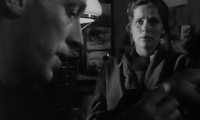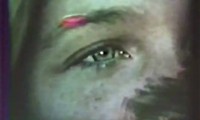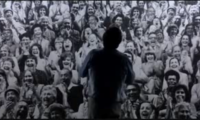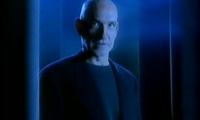Michael Kloft, “Television Under The Swastika” (1999)
“I’m very happy that everything is so harmonious today. Granted there are a few sour notes and people playing out of tune. And maybe some that would like to march to a different drum… We don’t beat around the bush with them, do we? They’re sent to concert camps for their further education.”
That’s a speech from the state-run German television that aired in 1936. The host, who’s unnamed in the footage, looks like a clone of Dr. Strangelove — the archetype of the mad scientist. His speech and actions are extreme, he becomes so visibly excited at the thought of the concentration camps that he sneers at the camera, banging his hands together in glee.
It’s a moment where fact is bizarre enough to seem like satirical comedy, like Charlie Chaplin in “The Great Dictator.” But this isn’t Chaplin or Peter Sellers pretending, its an inside look at the Nazi regime from a new documentary called “Television Under the Swastika,” by German filmmaker Michael Kloft. (Above is just a snippet; you can see the whole documentary online).
The film provides a unique insight into daily life under the Third Reich, a regime where TV hosts joyfully hint at what’s being done to the Jews. These disturbing images are a historic moment in television history. They were the first regular broadcasts in the world. Eager to beat out the Americans and the British, Hitler invested heavily in television technology. As a result, Germany began regular programming in 1935, more than a decade before the US.
Most of the shows were done live, with documentary footage, interviews and variety shows. Every moment is rich in propaganda, as entertainment and music softens a more insidious message. We see vaudeville, where folk performers strum mandolins and sing odes to the uniforms of the SS. In another scene, amputees hop around obstacles to demonstrate their enduring physical agility in the face of adversity.
What we don’t hear is how these poor people feel about being made to hop through an almost impossible course, whether they are in pain and who made them perform in front of the television cameras. Instead, we hear the announcer comparing them to animals, saying they move “like weasels.” It’s macabre and sickening, and in today’s media-saturated environment, it’s so shocking that it almost seems surreal.
– Alexandra Shimo





